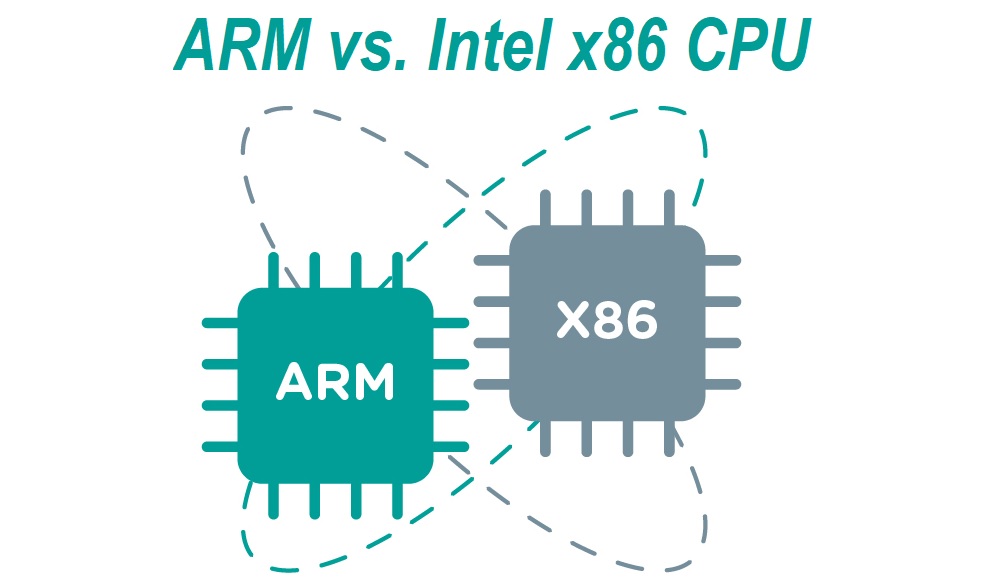Before innovative, revolutionary technology was widely available, high-level performance options were limited to Intel's X86 chips, or (if you had deeper pockets), the PowerPC system. Because of the slim pickings, tech industries became overdependent on X86 processors. However, around ten years ago, Apple hopped off the X86 bandwagon prompting numerous companies to abandon the ever-popular chip and search for more impressive options with higher capabilities.
Today, if you’re sourcing a CPU for your enterprise servers, you’ll have an ARM, Intel, and other chip options for consideration. Regardless of which CPU your business implements, you don't have to manage new tech independently. With the help of expert IT service providers like this, it's pretty easy to keep everything running smoothly.
ARM vs. Intel
Pitting Intel and ARM processors against each other inevitably rattles up diehard brand supporters on either end. As the tech wars rage on, explore the pros and cons of each system to gain a clearer understanding of your unique service needs.
ARM Chip Servers Pros
ARM servers are currently dominating the mobile computing market, tackling Intel and other chip players head-on in the server segment. Take a look at the numerous benefits ARM servers to have to offer.
Power efficiency
When you pit ARM-based processors against Intel, the latter falls short. ARM developers have based infrastructure on a simplified instruction set (RISC), while Intel X86 processors rely on CISC (Complex Instruction Set Computing). CISC is more complex, requires additional power, and relies on transistors to carry out basic commands.
On the other hand, ARM capitalizes on low-power CPUs, optimizing their performance by using micro-architecture design. In doing so, ARM produces energy-efficient CPUs while without sacrificing performance.
Cost
ARM CPU’s low cost is a magnet to many businesses. Unlike Intel options, ARM-based chips require fewer transistors, making them cheaper to produce. Given that servers run around the clock, consistent, efficient operations are critical. ARM's power efficiency prowess helps businesses save resources and money, particularly on reduced power bills.
Customizability
Unlike Intel, whose chips are produced in-house and branded "Intel Inside," ARM's business model is unique. Instead of manufacturing chips internally, ARM operates a licensing model, enabling businesses to choose a licensing plan that suits their specific company goals.
ARM Processors Cons
Every tech-based solution has its pros and cons—ARM servers are no different. Although highly efficient and cost-effective, ARM CPU systems don’t always support specific software, making implementation complicated. Additionally, ARM servers are incompatible with X86 processing units used by various big-name enterprises.
Intel Processors Pros
Over the past five years, ARM processors have dominated the mobile and tablet landscape. Although they’re making significant strides in the CPU market, wrestling the computer industry from Intel may prove difficult as X86 chips remain on top for enterprise computer requirements.
Compatibility
Most servers are X86 based and, therefore, suffer little incompatibility challenges associated with software development issues. Because of their user-friendly compatibility rates, integrating an Intel system into your operation will likely be swift and effortless, with few tech complications.
High performance
Over the years, Intel has risen in popularity for its high-performance chips. Based on the CISC platform, the X86 can perform various tasks simultaneously with a single set of instructions. While ARM processors can run circles around Intel in the mobile industry, Intel chips dominate computer markets because of their ability to run large applications at high speeds.
Intel x86 Servers Cons
Although Intel x86 servers offer high compatibility and performance levels, consumers have increasingly pressing concerns. Intel CPUs command a high price, locking out businesses with budget constraints, making it difficult for some companies to justify implementation. Additionally, Intel systems can overheat and drain power sources due to high-volume operation speeds and processes. Significant energy drains can become costly, and overheated equipment can pose health threats to users.
Which is the Best CPU for Enterprise Servers?
Deciding whether to implement ARM and Intel operating systems boils down to preference and expectations. ARM leads the charge, making energy-efficient, low-priced processors ideal for niche end-users with a moderate workload. On the other hand, while x86 may not be the fastest server on the market, it's suitable for consumers keen on high-performance chips.








COMMENTS